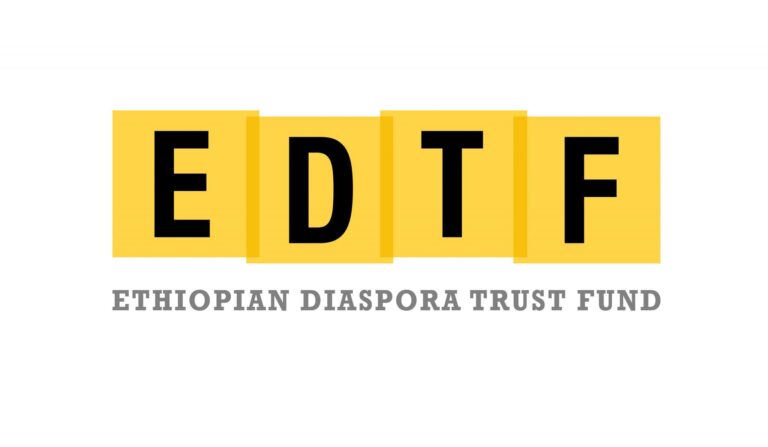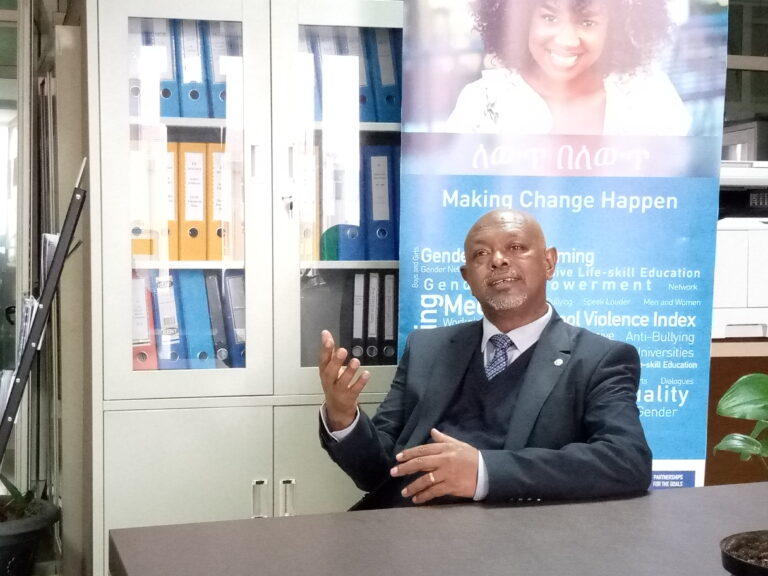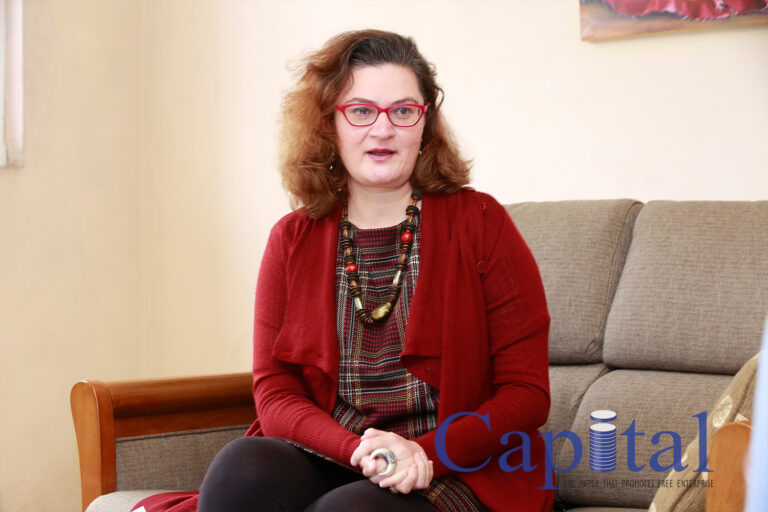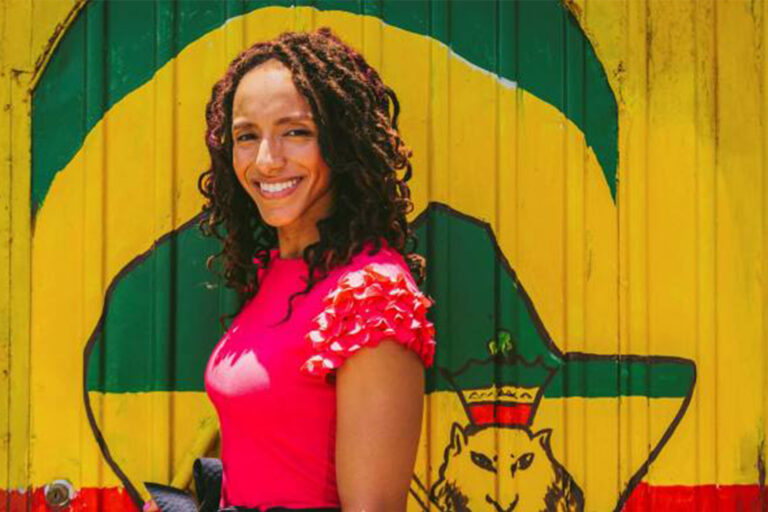The Ethiopian Diaspora Trust Fund (EDTF) announced the release of funds for the first set of five projects in the country that were previously approved by the EDTF Board of Directors.
“The projects were reviewed by expert Technical Review Teams which had confirmed their compliance with EDTF’s project eligibility criteria,” a statement from EDTF reads.
“Before final funding, each project was subjected to rigorous and transparent capacity assessment and budget review focusing on organizational capacity, operational and financial management and effectiveness to deliver on proposed project outcomes,” the statement further reads.
Among the key evaluation criteria included were: project sustainability, potential impact, scalability, innovation and creativity, cost efficiency (value for money), accountability and transparency. The release of the funds was approved by the Advisory Council of fEDTF (Friends of EDTF) on 9 August 2020 after a final round of thorough inspection of the projects and the applicant organizations. The total first quarter installment of the project funds amounting to 5.9 million birr was transferred directly to the Bank accounts of the implementing organizations.
The five funded projects are:
Help for Persons with Disabilities-Organization (HPD-O) – Construction of special needs education units for disabled and neglected children in selected primary schools in 3 Woredas of Amhara Region, Semien Shewa Zone.
Hiwot Integrated Development Organization (HIDO) – Early Childhood Care and Education Services for Orphans and Vulnerable Children (OVC) at Woreda 06 of Addis Ababa.
Pro Development Network (PDN) – Promotion of Safe Water Supply, Hygiene and Sanitation – Forhard-to-reach communities using renewable energy in Afar and Tigray Regions.
Gurmuu Development Association (Gurmuu) – Improving children’s learning environment in four primary schools in Oromia Regional State.
Korah Great Hope Charity Organization (KGHCO) – Hygiene and sanitation promotion education and practices in Kolfe Keraniyo Sub-City Qoshe area of Addis Ababa.
Ethiopian Diaspora Trust Fund releases funds for five projects
The COVID 19 Pandemic
The COVID 19 Pandemic has brought to the forefront a lot of discussions some of which are on gender based violence and management of schools. Capital Newspaper conducted an interview on these issues with Yehualashet G/Michael, Acting Director of Initiative Africa, a local Civil Society Organization working on gender equality, quality education, reducing gender based violence and business support programs.
Capital: Since the first case of COVID 19 in Ethiopia was announced, stay at home was advised as the best precaution. In the following weeks, media reports surfaced of an increase on Violence against Women and Girls. As an organization working on reducing gender based violence, what is Initiative Africa’s response to the situation?
Yehualashet: Gender based violence has been one of the major challenges of most patriarchal societies who are way behind achieving gender equality like Ethiopia. I think the COVID-19 crisis brought new challenging situation and also became an eye opener to understand more about gender equality and see our gender structure.
As you have said there is more news of gender based violence on the media though we are short of statistical evidences to show the increase. For example, in Addis Ababa there are three one-stop-centres – Tirunesh Beijing, Gandhi and Menelik hospitals – which serve those victims of sexual violence but have seen a decrease in reported cases of sexual violence. This is perhaps because women and girls fear going to health centres during this crisis, or perhaps because they live with the people who have caused them harm and they do not have the privacy to report the abuse. On the other hand, there are some studies which disclosed preliminary results that the number of confirmed rape cases and domestic violence is increasing by 25-30%. The instances of the violence have been executed by close relatives, family members and abusive partners. Different regional states have also reported early marriage cases.
Hence, as part of our Making Change Happen Project, we are conducting a survey to have the evidence and plan an intervention.
Capital: Kindly, elaborate more about the Making Change Happen Project.
Yehualashet: In Ethiopia, gender inequalities prevail and are affecting everyone. Not everyone experiences inequality the same way. The situation is worse, and often different, for women and girls. Women are vulnerable to increased risk of acts of violence. Women still remain severely under-represented in key, growth-enhancing fields of education such as science, technology, engineering and mathematics. The labour markets exhibit many “gender gaps” particularly beyond the lowest level of hierarchy. Women remain underrepresented as subjects of news stories, as sources and positively influencing the media than men.
In order to address such issues Initiative Africa started to implement the Making Change Happen Project as we are an organization striving to contribute to the country’s development goals by increasing women’s participation, leadership, influence and decision making. The Making Change Happen Project is focused on addressing gender issues in the workplace, schools and communities, and the media. It is a three years project which ends in June 2021 and supported by the Embassy of Sweden/Sida. The project targets 92 Woredas in six regional states and is working to directly benefit more than 178,590 girls and boys in and out-of-school.
Capital: What is the progress of the project with regards to the components you mentioned?
Yehualashet: As always, we are working with government offices, local civil societies and the community in the project target areas.
With this project we have been trying to propel women in the decision making structure of the private sector and non-governmental organizations; improve sexual and reproductive health of adolescents in secondary schools through health/sport clubs, training materials, equipment’s, information/ education/ communication materials, workshop training; assist secondary school girls in 92 schools gain confidence and capacity they need to get rid of gender based violence in schools and their community by using School Violence Index and making their voice heard and taken into account; and support work places achieve gender equality by building capacity of media that support gender equality objectives.
In response to the pandemic situation, apart from conducting the survey I mentioned earlier, we are organizing online discussion forums on issues of gender based violence and gender equality. Aiming at reaching girls who are staying at home, we are now screening 42 episodes of secondary school science lab experiments performed by Ethiopian girls on the MOE TV Channel in collaboration with the Ministry of Education.
Capital: What is the way forward?
Yehualashet: In the coming 9 months we will be focussing on completing the planned activities and mobilizing more resources for scaling up the project outcomes and the initiatives underway. We are also now getting ready to provide our support to the education offices and the community in the target areas on their efforts of preparation for school re-openings.
Free employment service
Ruchika Bahl is the Chief Technical Advisor for the EUTF Project under the International Labor Organization (ILO), Addressing the Root Causes of Migration, a part of the Stemming Irregular Migration in Northern and Central Ethiopia’ (SINCE) Programme. The project is strengthening National employment programs and youth employment services aiming to create decent work and employment opportunities for large number of potential youth and women migrants in Ethiopia, hence making migration an informed choice for them.
Ruchika has 20 years of work experience on development cooperation and policy advocacy with leading INGOs, bilateral and UN agencies across Asia, South America and Africa. Over the last two decades she has worked with diverse stakeholders on labor migration, advocated for migrant workers’ rights and designed financial inclusion and economic development programs for vulnerable groups at national and regional level. Ruchika is a lawyer with additional qualifications in Gender & Social Policy, Social Work and Psychology.
Capital: Can you tell us about the project you are heading?
RuchikaBahl:I currently address the root cause of migration. The project is funded by European Union Trust Fund and it is the first project of its kind not only in Ethiopia but also in Africa. Here in Ethiopia it is managed by the Italian Embassy. The project mainly focuses on the enhancement and increment of possibilities for young people in the labor market. But this is primarily based on their migration choice, that is, if they would want to stay in their country to participate in their economy or migrate elsewhere to do so. The project kick started in 2016 and we chose Bahirdarin AmharaRegion. The project’s major focus was to increase information about employment opportunities thus enhancing opportunities for young people. This was achieved by allowing job seekers to have access to vacancies. This further led to a match making process where the job seekers were matched to employers and or the private sector. We chose to start our pilot project in AmharaRegion because youth unemployment in that region was the highest. The decision was made in partnership with thegovernment of Ethiopia, specifically with the Ministry of Labor and Social Affairs.
Capital: What are the successes of the project in the three years of implementation?
Ruchika: As of now we have set up two successful centers. The first one is a youth employability service center- which is set up at a Sub-city administration level in Bahirdar, in three Kebeles. We have found the existing platform in Amhara as a valuable one stop service center.We have used the existing system to embark on our new process. We have trained staff ranging from the Bureau of Labour and Social Affairs and TVET to help the youth to better identify their choices. They can opt to pursue for self-employment or wage employment, because not every person is interested in setting up an enterprise. To that effect we have set up a platform where the youth can come and register themselves as job seekers. We have also reached out to the private sector through the Amhara Employers Federation, which is our key partner in our technical group. Through them the private sector has played a huge role in orienting and highlighting to the youth on benefits of sending applications forthe vacancy posts as well as provide them with jobs through the vacancies. We have also introduced additional services such as employability services- which in turn means the youth can build up their soft skills currently required to navigate the work environment. This service educates the youth on how to look for a job and also how to well prepare for the interview. This is a priority for us because the Private Sector often say that the youth lack some soft skills, thus this service combats that. Secondly, we have set up unemployment centers at the city administration level. We have trained staff from BOLSA and TVET to run this particular center in partnership with the regional government. The two centers have been operational for two years.
Capital: How do you evaluate the demand and the challenges?
Ruchika:We can say that there is a huge demand. For instance we have approximately registered about 3,500 youth as job seekers. And so far we have received 330 vacancies, which translates to only 10 percent in comparison to the job seekers out there. So our current focus is on how to encourage the private sector on fair employment services. This is in link with government’s obligation to provide free employment services, since the government of Ethiopia has ratified the ILO convention on public employment services. Aspart of this convention it is obligated to provide free employment service to anybody who requires it. This is also in line with the critical elements of the National Employment Policy of 2016 and more recently the National Plan of Action for Jobs. So we are using the existing government institutional framework to build the capacity of staffs in the institution to deliver these services. That summarizes it all. The other thing is that when we started the project we were posed with a lot of challenges. Youth employment is something that cuts across several ministries mandates, thus this can create chaos when it comes to ministries demanding from us. However, for this not to be a barrier, we set up Multi-Ministerial technical working groups. This comprised of the Bureau of Labor and Social Affairs- which is responsible for labor and employment Bureau of TVET- responsible for vocational training and delivering right skills and the Bureau of Women, Children and Youth whose mandate is youth mobilization and mainstreaming. We also engaged employers and trade unions with this technical groups to create collective responsibility and ownership amongst ministerial offices.
The second challenge we faced was on the side of digitization. Lack of Information Technology being used by government presented us with a drawback. Moreover, there was lack of skill in the operationalization of digital technology. So the center initially started as a manual labor exchange center, but we then transition to a digital way of things. We developed a company website and mobile application, so that one can easily visit the website and register as a potential job seeker. Various jobs are available on the site which are sent and shared to the job seeker.
Capital: There are a lot of donor funded projects operating on empowerment, what makes your project unique?
Ruchika:I think youth employment is a national urgent priority for Ethiopia’s government and several donors are investing on the same. But there is always room for others to invest in this sector since it is huge. What makes ILO unique is the fact that it is a technical agency that works in partnership with Ethiopia’s government. We believe in the principle of ‘TRIPARTITE’- which means that employers, trade unions and governments are the three key partners in essentially running the world’s workforce. We believe that government is not able to do everything, thus it needs the participation of private sector and trade unions. What’s also unique of our project is that it is the first pilot project. We are therefore not duplicating existing government’s framework but rather strengthening government’s capacity to deliver the expected services.
We can say we are killing two birds with one stone because, we are providing youth employability through government platforms as well as investing to build governments capacity by training staff to deliver on it. We do not source external staff so this is a working progress. This progress has led to other regions wanting us to replicate the same in their areas. Since it has been a successful demonstrative project, the government can now say if it works in Bahirdar, it can work in other places as well.
Lastly what makes us unique is the participation of private sector and trade unions. This partnership leads to the private sector having a transparent recruiting procedure, which was a challenge before.
Capital: Do you have plans to expand the project to other places?
Ruchika: This is a pilot project, and we have also closely worked with the government through the Job Creation Commission (JCC) on the development of the national plan for job creation. Furthermore, the Ministry of Labor and Social Affairs in conjunction with JCC are developing a new vision and a new roadmap on public employment services in the country. So we are working on a new way to redefine how public employment services should be. We are making structural changes that will be effective and efficient on ground. In terms of capacity, upon implementation it will create a much easier role to replicate what is planned for the country at regional level.
Capital: Ethiopia’s youth is very high, beside there is a high scarcity of jobs, can we say that the government is working with its full potential on employment?
Ruchika: Ethiopia is a very young country. 77 percent of the population is below the age of 35 and about 73 percent of the youth are between the ages of 0-25 years. The working population is between 15- 64 and this comprises of 65 percent of the population. This demographic bulge of youth presents some challenges. The challenge is on how to channel this youthful population as some want to migrate and others want to participate in the labor market through self- employment. There is a huge skill mismatch since even the graduates in the country are just going for available jobs. To combat this, some private sector companies have trainee programs but not all companies are investing in jobs and skill creation. Furthermore, the youth are challenged with finance as the salary is too low, thus demotivating them not to keep the jobs.
Afua Hirsch on exploring African culture beyond the western gaze
By Afua Hirsch
In making my new television series African Renaissance, one question has always nagged me: what would the African continent look like if it had never been colonised? Filming the work of the Ethiopian photographer Aïda Muluneh in Addis Ababa, the question lost its hypothetical quality. As a new arrival in the Ethiopian capital, I was struggling to adjust to the alphabet of Ethiopia’s Amharic, as well as to systems of date and time that shun global convention. As you read this, it is 2012 in Ethiopia, and the time runs on a 12-hour clock beginning at daybreak and again at dusk. I saw how Muluneh styled her model with floor-skimming braids, and dressed her set in trademark primary colours, fusing Afro-futurist art, fashion and photography into her surrealist prints. To me, they served as a portal into the unfamiliar world of her country, one that has never fully succumbed to Eurocentric cultural or administrative traditions. Ethiopia is beginning to overcome the hijacking of its reputation as synonymous with famine and misery, an image omnipresent for as long as I can remember. Drawing attention to the country’s past hardships may have been well-intentioned. But the failure to balance charity appeals with other images of this ancient land has created a misleading single narrative that persists. These days, Ethiopia is becoming a bucket-list destination, one that attracts travellers with its incredible ancient ruins, such as the 2,000-year-old obelisk at Axum, one of the four great kingdoms of the ancient world. Its fourth-century rock churches, carved into mountains at impossible altitudes when Christians faced persecution, casually bear murals of a black baby Jesus, black prophets, saints and angels, at a time when the church in Europe was first navigating its role in spreading white supremacist images of biblical figures.
But my quest in this, and in all the episodes of my series, was to step away from the western gaze that has done so much harm to the African continent, and to see it for what it is, to explore its art, music and culture on its own terms. It is a continent of unimaginable diversity, and the three countries in which we filmed, Ethiopia, Kenya and Senegal, are nothing alike in culture, history or art. There is no “African story” – except perhaps innovation – and it’s the creative beating heart of these countries I wanted to find. My aim was neither to confirm nor reject images projected on to them from the outside, but to discover their own artistic expression. The power of that expression has gained new traction in recent months. It was only a matter of time before the struggle against racism – brought into painfully sharp focus by the killing of George Floyd in the US – segued into global questions about the cultures of people of African heritage, how blackness is misrepresented and commoditised, and why ideas about black creativity, innovation and art continue to be degraded.
The best answer to the prejudice that still plagues majority white societies is to look to the motherland itself. In Senegal, a francophone nation on the far west coast of Africa which I called home for several years in my twenties, resistance against colonial power is still a driving force in art. There is important and vibrant work, from DJ Awadi, founding member of hip-hop group Positive Black Soul, who is reviving the sounds of highlife music in his eclectic fusions, to Germaine Acogny, the legendary choreographer and mother of contemporary African dance. I visit Acogny at Mudra Afrique, her school in the sandy expanse of Senegal’s coastline, where dancers selected from across the continent learn her method, transcending the widest range of ethnic and linguistic boundaries. As Acogny tells me, her mission to fuse the traditional and contemporary is more profound than a form of choreography. “Africa is a force,” she explains. “And here, Africans need to know that as well, and be proud of what they are. People without culture disappear from Earth.” Senegal’s first president, Léopold Senghor, was a powerful proponent of this philosophy, which he and others – notably the Martinican writer Aimé Césaire – dubbed négritude. The poet-president invested a monumental 30 per cent of Senegal’s budget in culture and the arts, a powerful commitment for a new nation, and one from which Britain could well learn.
Modern Kenya too has much to teach us about policy responses to our greatest challenges. The east African nation has positioned itself as a country willing to take bold measures on climate change and sustainability, and that evolution is reflected in its art scene. Arriving in a country that has banned plastic bags – your airline warns you to leave any in your possession on the plane when you touch down — it’s perhaps no surprise that sculptors such as Meshack Oiro are creating fusion pieces that experiment with form and space using metals, plastics and other waste materials salvaged from Nairobi dumps. These contemporary stories have to be understood within the historical context of a country that experienced one of Britain’s most audacious and criminal land grabs. Outsiders’ perceptions of Kenya risk being layered in decades of colonial romanticism over this land – a narrative we unflinchingly explore in the series. I visit the house where Danish author Karen Blixen wrote Out of Africa, a novel that did so much to promote the idea of Africa as one vast, empty savannah, populated by many majestic creatures and a few inconsequential humans. I interview Mau-Mau veterans at the site of one of the torture camps Britain built to “deradicalise” the men and women whose crime was to fight back against the appropriation of their resources and the exploitation of their labour.
The Kenyan painter Michael Soi is emerging as a leading voice in the conversation about the new wave of colonialism threatening so many African nations’ sovereignty – the scramble for influence, credit and resource extraction. Soi’s paintings probe the role of China, as well as Kenya’s political elite, with humour and satire. Seeing Xi Jinping painted in a nappy, Soi-style, is a rare visual treat. Growing up with African heritage in Britain, at a time when it still had a nostalgic longing for colonial greatness, left me profoundly unaware of the true complexity of art in African countries. No single series could really remedy that – the breadth of artistic tradition and contemporary creativity across the African continent far exceeds what hour-long films about three countries can offer. But after a life spent re-educating myself, making this series has taught me two things. The first is that in Africa there is no tension between tradition and contemporary art: African cultures are always reinventing themselves with the same innovative spirit and talent that have earned them the global influence they have today. The second is that, in every one of these countries, I still have so much more to learn.
(Financial Times)






